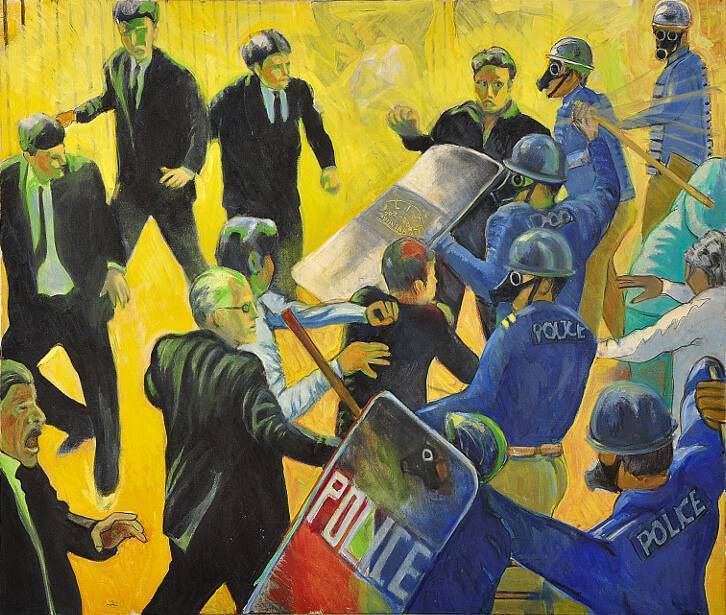WHERE ALL THE WOMEN GO?
Women’s representation has been a controversial topic for those involved in art. Although in modern art history, we hear more names belonged to women, this wasn’t always the same. Even today, we have miles to go when it comes to gender equality.
It is evident that talent knows no gender, but men dominated art while categorizing women as subject matter by objectifying female body for centuries. Could contemporary art end this male-domination? We cannot deny that there has been a significant change. However, women’s representation in art still brings the desired success or victory to men.
COMBATING AGAINST SEXISM
Of course, movements have fought for visibility. “Guerrilla Girls” was one of the most influential groups that focused women’s visibility in art. It was an anonymous group founded in 1985 to combat sexism and racism in the art world. Its members hide their identities by wearing gorilla masks in public. They also carried out their actions by pasting posters on billboards and streets.
The most crucial point of their uprisings is that only 10% of the Museum of Modern Art (MoMA) featured artists are women. It was the fundamental issue that led to the emergence of “Guerrilla Girls.” They have targeted museums, dealers, curators, critics, and artists responsible for excluding women and people of color artists from mainstream exhibitions and publications.


“Do women have to be naked to get into the Met.Museum?”, from guerrillagirls.com
“Do women have to be naked to get into the Met. Museum?”
Also, “Do women have to be naked to get into the Met. Museum?” took one of the essential steps in fulfilling the purpose of their criticism. The banner for the Public Art Fund in New York depicts a painting of Grande Odalisque, an 1814 canonical work by Frenchman Jean-Auguste-Dominique Ingres. This banner was on their bus in New York. With this banner’s help, which caused many controversies, women protested harshly that only their bodies were products, that patriarchy deliberately excluded women in the arts.
As represented in Odalisque’s original work, male artists focused mainly on female bodies for centuries. They painted the biological characteristics of the female body and highlighted vaginal imagery.
This movement was one of the most resonant ones of contemporary art. It may be the only movement specific to the area where the feminist approach is being art-articulated. It was a bold move of his time, arousing many voices at the time it occurred.
FEMINIST MOVEMENT AFFECTED ART
Of course, the feminist movement affected art inevitably. One of the central texts of feminist art history, which Linda Nochlin wrote in 1971, is “Why Are There No Great Women Artists?” While challenging the stereotype of a great male artist, she expresses how little space has female artists in art history.
Moreover, one of the most famous first-generation works belongs to Judy Chicago. Her “The Dinner Party,” dated between 1974-79. It highlighted the collective effort of women for a common cause.
Lastly, Carolee Schneemann is also an artist dealing with the issue. When Schneeman first showed the “Eye Body” series to curators, they characterized these works as purely selfish and exhibitionist. However, Schneeman aimed to show female sexuality’s power from a women’s perspective with this series.
RELATED SOURCES TO THIS CONTENT
https://www.guerrillagirls.com
https://towardsdatascience.com
IMAGE SOURCES
“Guerrilla Girls,” Lois Greenfield (1999) from guerrillagirls.com
“Do women have to be naked to get into the Met. Museum?” (1989) from guerrillagirls.com
Judy Chicago’s “The Dinner Party,” Photo by Jong Heon Martin Kim (2017) garage.vice.com
Carolee Schneemann’s “Eye Body” (1963) www.moma.org












